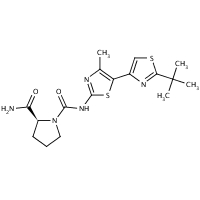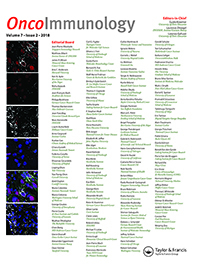All AbMole products are for research use only, cannot be used for human consumption.

A66 is a novel small molecule inhibitor of PI3K p110α with IC50 values of 32, 30 and 43 nM for p110α, p110α/E545K and p110α/H1047R. A66, showing the S-enantiomer to be a highly specific and selective p110α inhibitor. The responsive cell lines all harboured H1047R mutations in PIK3CA and have high levels of p110α and class-Ia PI3K activity. A66 is more than 100 fold less active against the other class-I PI 3-kinase isoforms and had not inhibitory activity against 200 protein kinases when tested at 10 micromolar. This makes it the most selective and specific p110α inhibitor available for research purposes.

Cell Commun Signal. 2022 Jul 7;20(1):102.
Circular dorsal ruffles disturb the growth factor-induced PI3K-AKT pathway in hepatocellular carcinoma Hep3B cells
A66 purchased from AbMole

Front Cell Dev Biol. 2021 Aug 6;9:649656.
PI3K Plays an Essential Role in Planarian Regeneration and Tissue Maintenance
A66 purchased from AbMole

OncoImmunology. 2018 Jan 1.
A PI3K p110α-selective inhibitor enhances the efficacy of anti-HER2/neu antibody therapy against breast cancer in mice
A66 purchased from AbMole
| Cell Experiment | |
|---|---|
| Cell lines | CD4+ T lymphocytes |
| Preparation method | T lymphocyte isolation and activation To obtain naive CD4+ T lymphocytes (CD4+CD62L+ T cells), spleens were passed through a 70 lm mesh. After centrifugation, red blood cells were lysed and the cells washed in culture medium (Click’s medium supplemented with 10% heat inactivated FCS). Then, naive CD4+ T cells were isolated using Miltenyi CD4+CD62L+ T cell isolation kit II for mouse cells (Ref. 130-093-227, Miltenyi Biotec, Bergisch Gladbach, Germany) according to the manufacturers’ instructions. The isolated cells were routinely >97% CD4+, >95% CD62L+. Cells (106) were cultured in 1 ml culture medium in 24- well culture plates (Costar) pre-coated with anti-CD3 antibody (YCD3-1, 5 lg ml 1). Where indicated, anti-CD28 (H57, 2.5 lg ml 1, eBioscience, San Diego, California), DMSO or inhibitors dissolved in DMSO (1 ll per culture) were added. At 24 h, the cultures were resuspended, centrifuged and the supernatants assayed for cytokine content. |
| Concentrations | 0~10 μ M |
| Incubation time | 24 h |
| Animal Experiment | |
|---|---|
| Animal models | mice bearing SK-OV-3, HCT-116 and U87MG xenograft models |
| Formulation | 20% 2-hydroxypropyl-β-cyclodextrin (Sigma–Aldrich) in water |
| Dosages | 10 ml/kg once daily (QD) or twice daily (BID) daily for 21 days or twice daily for 16 days (SK-OV-3), daily for 14 days (U87MG) and daily for 7 days (HCT-116) |
| Administration | intraperitoneal injection |
| Molecular Weight | 393.53 |
| Formula | C17H23N5O2S2 |
| CAS Number | 1166227-08-2 |
| Solubility (25°C) | DMSO 50 mg/mL |
| Storage |
Powder -20°C 3 years ; 4°C 2 years In solvent -80°C 6 months ; -20°C 1 month |
| Related PI3K Products |
|---|
| T-00127-HEV1
T-00127-HEV1 is a phosphatidylinositol 4-kinase III beta (PI4KB) inhibitor with an IC50 of 60 nM. |
| PI3Kγ inhibitor AZ2
PI3Kγ inhibitor AZ2 is a highly selective PI3Kγ inhibitor (The pIC50 value for PI3Kγ is 9.3). |
| NIBR-17
NIBR-17 is a pan-class I PI3K inhibitor with suitable pharmacokinetic properties and inhibits tumor growth. |
| RV-1729
RV-1729 is an inhibitor of the phosphatidylinositol 3-kinase-δ (PI3Kδ). |
| Vulolisib
Vulolisib is a potent and orally active phosphatidylinositol 3-kinase (PI3K) inhibitor, with IC50 values of 0.2 nM, 168 nM, 90 nM and 49 nM for PI3Kα, PI3Kβ, PI3Kγ and PI3Kδ, respectively. |
All AbMole products are for research use only, cannot be used for human consumption or veterinary use. We do not provide products or services to individuals. Please comply with the intended use and do not use AbMole products for any other purpose.


Products are for research use only. Not for human use. We do not sell to patients.
© Copyright 2010-2024 AbMole BioScience. All Rights Reserved.
